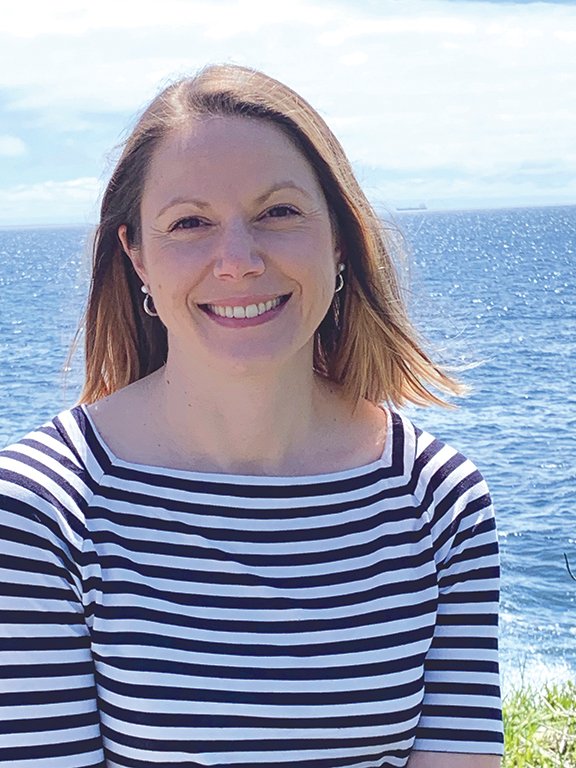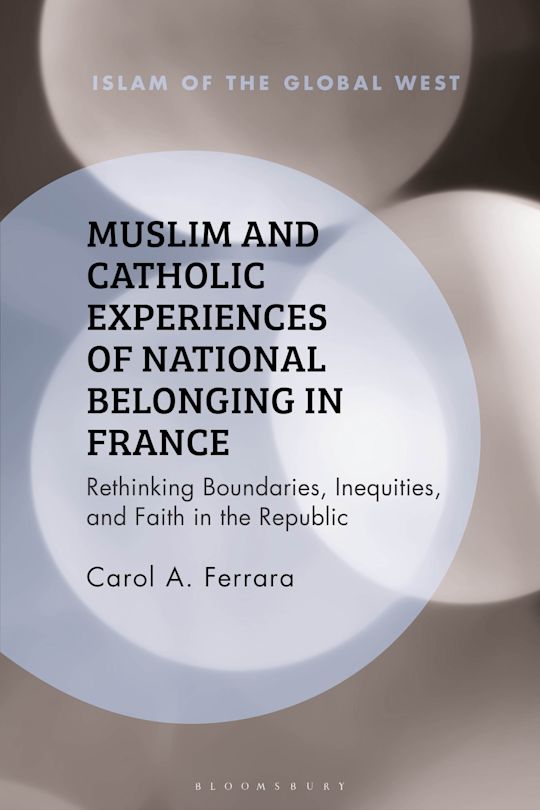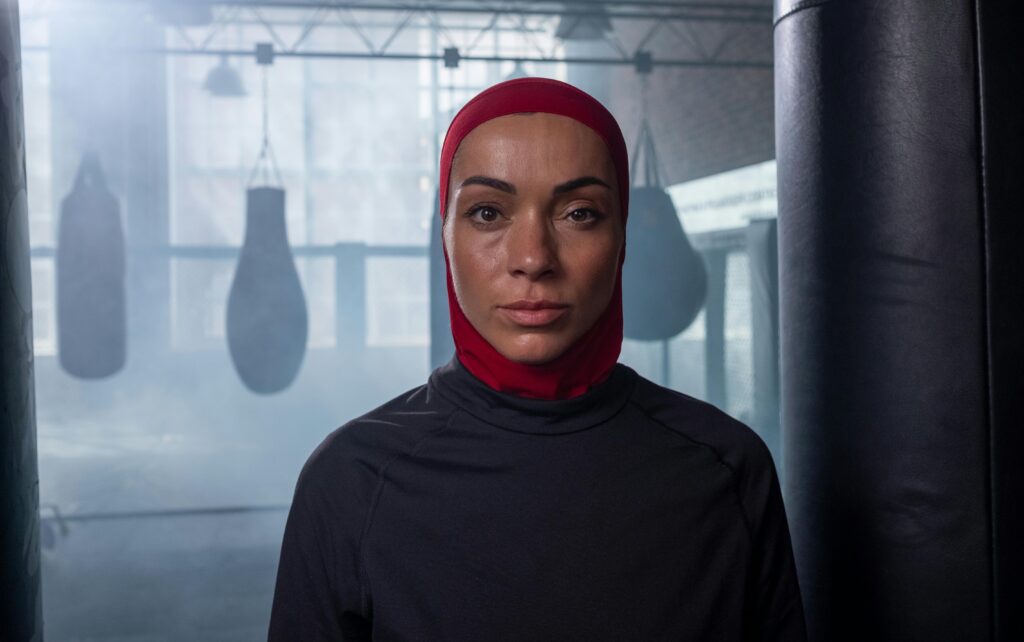Ferrara’s New Book Examines Muslim vs. Catholic Experiences in France
Emerson College Anthropologist and Marketing Communication Assistant Professor Carol Ferrara’s new book, Muslim and Catholic Experiences of National Belonging in France is the culmination of a decade of research.
The book, about the experiences of Muslim and Catholic French citizens and who is considered implicitly “French,” is part of Bloomsbury Academic’s Islam of the Global West series.
Ferrara spoke with Emerson Today about her work in French schools, the inspiration to write the book, how her research is included in classes she teaches, and more.
This is an edited version of the conversation.

What is the book about?
Ferrara: The book is about the divergent experiences of French Muslim and Catholic citizens, respectively, with French national belonging. I argue that these experiences are shaped by national implicit biases related to who and what counts as French. I call these collective biases “francité,” which basically comprises the circulating narratives, images, media, and messages that create what or whom one imagines as legitimately being French. Francité works to create a context wherein French Muslims, by default, tend to be excluded from French belonging – from being imagined as truly French. By contrast, French Catholics find default inclusion in regards to French belonging, and are always imagined as French. The book explores how francité divergently affects the lived experiences of French Muslims and Catholics, such as in regards to participating in civic engagement, or trying to establish religious or secular institutions like schools, or trying to go to college and feel like you are an accepted member of the community.
When did you start working on the book?
Ferrara: Some parts I began working on when I was a Master’s student at The American University of Paris. I became interested in the question of teaching religion in schools and the ways this could potentially increase tolerance and understanding from folks of other religions.
Thanks to a grant I was given during my dissertation work, I opened that field of research to a broader scope and interpretation of religious education, including mosques, churches, and spaces of interfaith dialogue. The book was significantly rewritten after my dissertation to include some of my post-doctoral Fulbright research in 2019-2020, which really helped me focus on the juxtaposition of Catholic and Muslim experiences with French national belonging.
What motivated you to embark on this research?
Ferrara: I think it’s important to note outright that I have no personal identity or affiliation with any group I worked with. Growing up without religion as a part of my daily life, even if my family had Catholic roots, drew me toward seeking a better understanding of religion, and especially people’s experiences with religion.
I have, however, always had a loose personal relationship with France. I became friends with a French family when I was very young through 4-H, and my father spoke French fluently. I remember distinctly having a conversation with a friend of this family during the headscarf [ban in 2004], wherein they strongly supported this ban on headscarves in public schools. Hearing from my friend who I had known for years, that they were in favor of the state being able to tell young girls what they could and could not wear as expressions of their personal identities, was so surprising to me. I thought, how could this be?
That sparked my interest before I had even gone to graduate school. Why was this such a problem for French identity – that there are such strong boundaries around French identity that certain “other” identities become threatening enough to need to ban them from a place as universal as public schools? That was an overarching theme throughout my research – who gets to fit in, who doesn’t, and why.
What did you hope to accomplish in writing this book?
Ferrara: When I first started this work, I was interested in how Muslim kids were growing up in France with such strong narratives of Islamophobia, and the few private Muslim schools that had opened in France caught my attention. What would it look like and be like to go to a private Muslim school surrounded by peers of the same faith, compared to public schools where there’s a lot of racism towards Arab students and Muslim students as members of a racialized religion?
In my research, I became acutely aware of the important work that Muslim schools were trying to do in France within this challenging political context. The boundaries and barriers for these schools’ approval, acceptance, and success seemed disproportionally higher compared to other organizations I knew and worked with. Nonetheless, they were working hard to break down the boundaries between Muslimness and Frenchness, and trying to guide students toward a coherent French Muslim identity.
So one main goal with this book was to tell the stories of struggling to belong and to build infrastructure for belonging that were shared by my many Muslim interlocutors, from French Muslim youth, students, and teachers, to imams, community leaders, and interfaith participants.
I also did extensive work in Catholic communities, including Traditionalist Catholic communities affiliated with the Society of Saint Pius X (SSPX), which is a minority within the majority. SSPX tenets essentially reject democracy inasmuch as they include support for the restoration of the French monarchy and strong lamentation of the French Revolution that imposed democracy and ousted the French monarchy to begin with. What’s particularly interesting about these … SSPX communities is that the individuals therein are rarely imagined as non-French. They may be French republican or democratic rule breakers, but they’re always already French.
A second goal of this book was to juxtapose the stories of struggle voiced by my Muslim interlocutors with default Catholic belonging, in order to shed new light on the dynamics of minority exclusion. This juxtaposition really works to upend the reasons we might assume Muslims are excluded – whether in the scholarly community or just intuitively. We’re not looking at all the angles if we ignore the ways and reasons that other folks are allowed in the door.
This leads to the third goal of the book, which is to demonstrate that several of the key explanations for Muslim exclusion, especially those that point the finger at laïcité, or French secularism, are misleading when we take Catholicism into account. It’s easy to look at headscarf bans, crackdowns on Muslim schools, restrictions on halal food in school cafeterias, or efforts to ban Muslim prayer in the street as being the result of strongly enforced state secularism – or as an effort to strip the public sphere from religion.But if practicing Catholics – even Traditionalist Catholics who may bend or break key French republican rules – are so easily able to find such strong belonging, then Muslim exclusion can’t just be about misinterpretations of French secularism….
And of course, we can and should look at the way minorities are excluded everywhere, not just in France. We need to look hard at national identity narratives, and what it means to be a member of a national community, and what forces are really at work in including some and excluding “Others.” The book is about the French context, but it resonates well beyond France in regards to how and why marginalized populations get excluded from national imaginaries.

What experiences do you address in the book?
Ferrara: I show the ways that even in spaces like interfaith work, which would seem to invite anyone of any faith onto equal footing, the barriers to civic engagement, respect, and participation are still higher for Muslims.
In contrast to a Catholic priest, who is paid by the Catholic Church and participates in interfaith work on behalf of, or even at the request of the Church, there are few equivalents in Islam in France. There may be an imam in charge of a particular mosque who may be salaried and chooses to volunteer in interfaith work. But there’s no major institution paying the salaries of all the imams and requesting their participation. This means that a lot of prominent interfaith workers are professors at universities teaching, for example, physics and engineering, and may also teach classes at a Muslim school, and have a side job of imam at a mosque, and then just volunteer for interfaith work. Muslim actors also face higher pressures to participate in interfaith work, and if they don’t participate, they are seen as anti-French, or anti-pluralist, or extremist, at worst.
Then there’s the chapter about French Muslim schooling that I mention before. Due to complicated quirks of French secularism, France funds private religious schools if they abide by a certain set of rules. The first Muslim private school that was granted state funding, back in 2008, recently had their funding rescinded. The school had won national accolades for being one of the best high schools in France. Grads from the school – some of whom I interviewed as part of my research – have gone on to be doctors, lawyers, and generally contribute positively to French society. That school lost its funding, I would argue, over identity politics more than anything else.
The penultimate chapter highlights the public engagement that Catholics have, some of which would be unimaginable for Muslims. The chapter opens by telling the story of my attending an interfaith event wherein SSPX youth were in attendance. SSPX rejects interfaith dialogue, since Catholicism is the one true religion, according to doctrine. They worked to disrupt the event entirely, eventually rushing on stage and pulling a fire alarm. In this case, we all just moved on and then continued the event elsewhere – no police, no legitimate fear, just frustration. I tried to imagine if it were Muslim youth causing such a scene.
What is your conclusion?
Ferrara: My conclusion is that we need to work toward creating more inclusive narratives of national belonging – in schools, in the media, and in politics. National identity should be understood as something that can be wielded by all of the people who actually comprise that nation or country, rather than an exclusive club that’s only for those who fit into the imagined ideal-type interpretations of what it means to be representative of that nation or country.

We need to be cognizant of the constant reiteration of narrow boundaries of national belonging – for example, in the French case, reinforcing that Frenchness means adhering to French republicanism over and over, even though that’s clearly not the real measure of belonging, as my research shows. Education, media, legislation, and political messaging should work to illustrate and support the lived experiences of the people who actually live in a place. It’s the idea that a Muslim wearing a hijab could potentially be on a political ad representing an ordinary French citizen, or in a Gap ad, or that a hijab could be sold in a French sports store to begin with – all of which became major controversies in recent years in France.
And certainly, Muslims are by no means the only “others” who face discrimination in France – there remains trenchant and growing antisemitism in the country as well, for example – but Muslims arguably represent the most public and controversial minority in 21st-century France. We need to work to recognize and attenuate the effects of our implicit biases, especially their collective impact on marginalized groups in society. Beyond this, I think if there were small changes made in France, it could go a long way in terms of reducing geopolitical tensions and giving less fuel to external organizations looking to do harm. I only see positive outcomes to making France more inclusive.
This is where my teaching at Emerson really ties in with my research. In all of my courses in the Marketing Communication department – from MK120 to BC609 – I teach quite a bit in about diversity, equity, inclusion, belonging, and bias. Marketing and media play a really important role in shaping our performative and aesthetic understandings of ourselves and each other. From my perspective, building cultural humility – which is basically developing mutual respect for those you don’t agree or identify with – as well as ensuring that we understand our responsibility to creating inclusive spaces – whether it be in the home, in the classroom, in the workplace, in the community, or even in the nation – is essential to being a socially responsible global citizen. I write about this in the book as it relates to France within a particular anthropological framework, but I bring those lessons directly into the world of marketing and business in my classes. And of course, fostering an inclusive workplace is markedly different from fostering an inclusive society and nation, but, perhaps idealistically, I feel like the same principles undergird both.
Categories